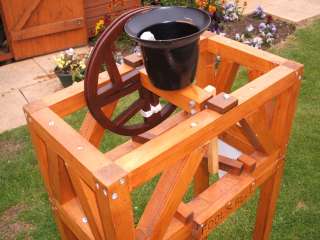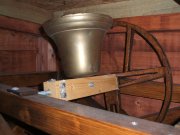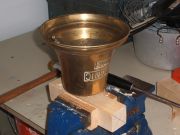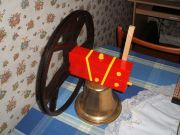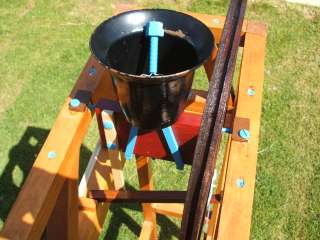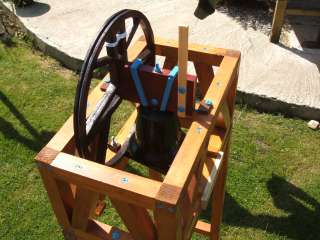|
|
|
A partial view of Abbey Bell, this model is one of the first model ever built, completed in November 2005 only the 'Titanic Bell' is older, although both bells underwent modifications in the following months, a bigger, better wheel was made and the frame improved.
Unlike the Abbey bell, this model was completed in March 2009 making it the more recent of the models, as it was painted not varnished this model took far longer to build, Abbey and Britannic bells are almost identical in size and weight but have a different 'pitch' or tone when being rung.
Both the images above are of Britannic Bell, above top is the model in its very earliest stages with the headstock being made, the second image is of the bell with its assembly completed waiting for its frame to be built.
'Fools Bell' is very light for its size, some bells which are half the size can be as heavy or heavier, the reason this bell is so light is that its cast from Tin not Brass or Bronze as the other bells are. This model had an overhaul in June 2007 with a new wheel, stay, slider and headstock, some improvements were made to the frame as well.
This image of 'Fools Bell' shows it in its raised position. Fools Bell emits a very tinny 'donk' when rung, due to the fact that it is cast of Tin and only weighs about 1lb.
|
